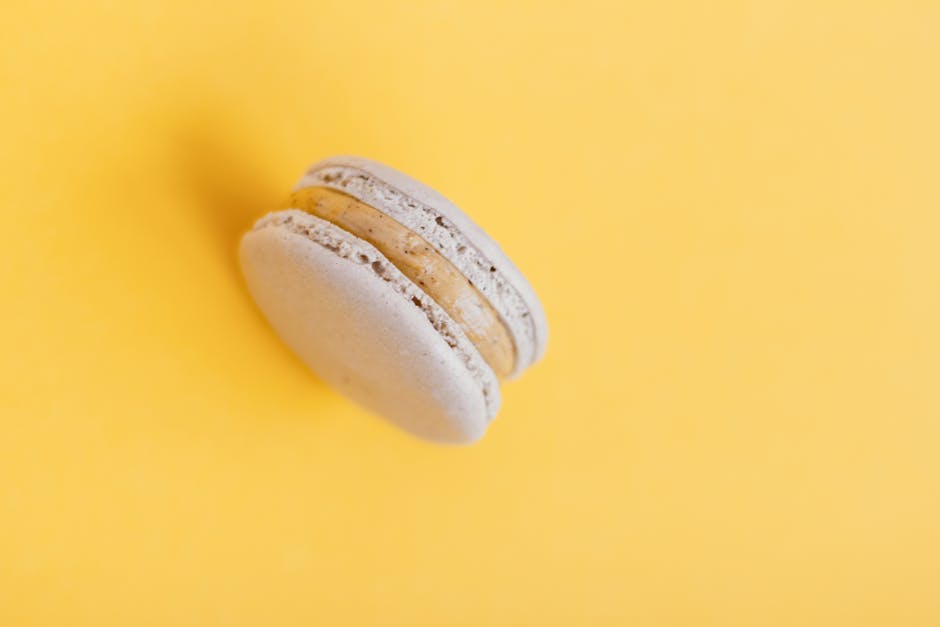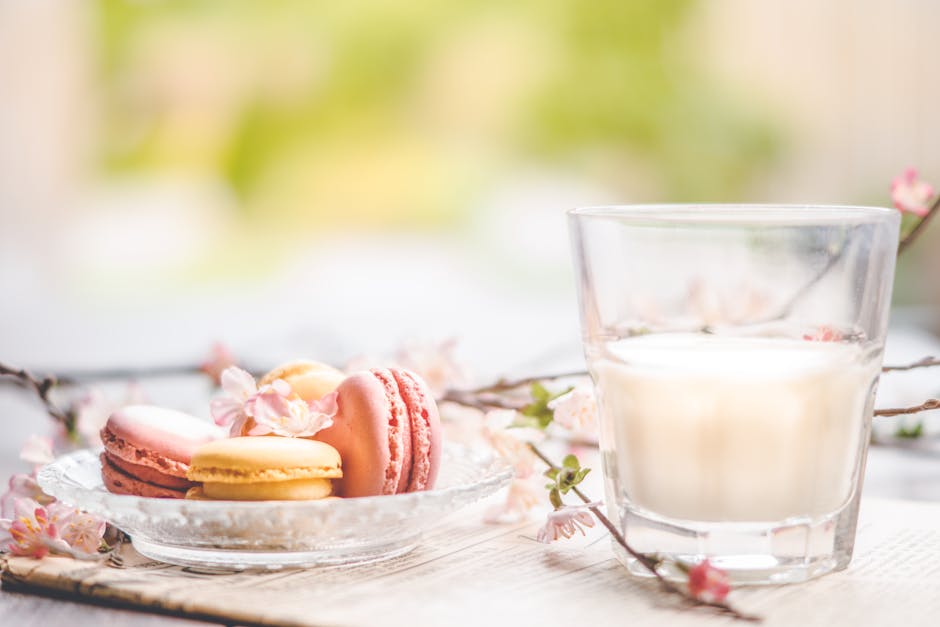Prepare to embark on a culinary journey with a sauce as rich and storied as its taste: the classic Hollandaise. This emulsified marvel, a cornerstone of French cuisine, boasts a history as captivating as its vibrant yellow hue. While its precise origins remain shrouded in some mystery, most culinary historians point towards 17th-century France as its birthplace, possibly even emerging from the kitchens of the opulent French court. The name itself, “Hollandaise,” intriguingly suggests a Dutch connection, possibly reflecting the influence of Dutch culinary traditions in France during that period or perhaps a simple misattribution. Regardless of its precise etymology, its impact on gastronomy is undeniable.
Hollandaise, at its heart, is a simple emulsion of egg yolks, clarified butter, lemon juice, and seasonings. Yet, this simplicity belies its complexity and delicate nature. The process demands patience and precision; a rushed hand can easily lead to curdling, transforming this luxurious sauce into a lumpy, unappetizing mess. This inherent challenge likely contributed to its status as a hallmark of skilled chefs, a dish that showcases mastery of basic culinary techniques. Interestingly, approximately 70% of home cooks report difficulty in making a successful Hollandaise at their first attempt, highlighting the learning curve involved in achieving the perfect velvety texture.
Beyond its technical intricacies, Hollandaise holds significant cultural weight. It’s not merely a sauce; it’s a symbol of elegance and sophistication. Its presence on a menu often signals a commitment to high-quality ingredients and refined culinary practices. It graces some of the most iconic dishes in Western cuisine, notably Eggs Benedict, a breakfast staple that would be utterly incomplete without its creamy, tangy richness. Beyond Eggs Benedict, Hollandaise’s versatility shines through, enhancing fish, vegetables, and even some meats, proving its adaptability and enduring appeal across various culinary traditions. Its bright yellow color, reminiscent of sunshine, adds a visual appeal that complements its luxurious flavor profile.
The enduring popularity of Hollandaise is a testament to its timeless appeal. While modern gastronomy constantly evolves, this classic sauce remains a staple, appearing on menus from Michelin-starred restaurants to humble brunch spots. Its enduring legacy is a testament to the power of simple ingredients, skillfully combined, to create a culinary experience that transcends trends and time. So, prepare to elevate your culinary skills and embark on this classic recipe, ready to conquer the challenges and revel in the rewards of a truly exceptional sauce.
Ingredients and Measurements
Creating a perfect classic hollandaise sauce hinges on precise measurements and the quality of your ingredients. Even slight variations can drastically alter the final texture and flavor. Therefore, using a kitchen scale for accuracy, especially for the egg yolks and butter, is highly recommended. While volume measurements can be used, they are less reliable for achieving consistent results.
Egg Yolks: You’ll need 3 large egg yolks. Use the freshest eggs possible, as older eggs may not emulsify as effectively, leading to a broken sauce. Room temperature egg yolks are crucial for proper emulsification; cold yolks are more likely to seize and create a grainy texture. Allowing your eggs to sit at room temperature for at least 30 minutes before starting is a vital step. If you’re short on time, you can gently warm them in a bowl of warm (not hot) water. Weighing your yolks provides the most precise measurement; aim for approximately 60-70 grams.
Lemon Juice: 1 tablespoon of fresh lemon juice adds brightness and acidity, balancing the richness of the butter. Avoid using bottled lemon juice; the added preservatives can negatively impact the emulsion. Freshly squeezed lemon juice provides a superior flavor and helps to stabilize the sauce. If you don’t have a lemon juicer, you can roll the lemon firmly on a countertop to soften it before cutting it in half and squeezing it by hand. One tablespoon is approximately 15 milliliters.
Cayenne Pepper (Optional): A pinch of cayenne pepper (approximately 1/16 teaspoon or less) adds a subtle warmth and complexity. Start with a very small amount and add more to taste, as cayenne pepper can be quite potent. This is entirely optional, depending on your preference for spice. Remember that a little goes a long way; it’s easier to add more than to take it away.
Clarified Butter: 1 cup (2 sticks or 227 grams) of unsalted butter, clarified. Clarifying butter removes milk solids and water, preventing your sauce from curdling. Using clarified butter is essential for a smooth, stable hollandaise. To clarify butter, gently melt the butter in a saucepan over low heat. Allow the milk solids to settle to the bottom, then carefully pour off the clear, golden butter fat, leaving the sediment behind. Let the clarified butter cool slightly before using it, but it should still be liquid.
Salt: A pinch of salt enhances the flavor of the sauce and balances the other ingredients. This should be added to taste at the end, after the sauce is fully emulsified. Use high-quality sea salt for the best flavor. The amount will depend on your personal preference but generally a pinch will suffice.
Water (Optional): A teaspoon or two of warm water can sometimes help rescue a sauce that’s getting too thick. However, this should be added very cautiously and only if necessary, as too much water can thin the sauce excessively. Only use this as a last resort if your sauce is too thick.
Note: All ingredients should be measured accurately for optimal results. Accurate measurements are key to achieving the perfect emulsion and preventing your hollandaise from curdling.
Equipment List
Making a classic hollandaise sauce requires precision and the right tools to ensure a smooth, emulsified result. While you might be able to improvise with some items, using the correct equipment significantly improves the process and reduces the risk of failure. This list details the essential equipment, along with recommendations for optimal performance.
1. Double Boiler or Heatproof Bowl and Sauce Pan: This is arguably the most crucial piece of equipment. A double boiler provides a gentle, even heat source, preventing the eggs from scrambling. If you don’t have a double boiler, a heatproof bowl (stainless steel or glass are ideal, avoid plastic) that fits snugly atop a saucepan partially filled with simmering water works just as well. The water level should never touch the bottom of the bowl. Ensure the bowl is large enough to comfortably accommodate your ingredients without overcrowding. A bowl with a diameter of at least 8 inches is recommended for a standard batch of hollandaise.
2. Whisk: A good quality whisk is essential for creating the emulsion. A balloon whisk, with its many thin wires, is ideal for incorporating air and creating a smooth, creamy texture. Avoid using a fork or spoon, as these won’t effectively incorporate the butter into the egg yolks. A whisk with a comfortable handle and sturdy wires will make the whisking process less strenuous. A 10-12 inch whisk is a good size for this task.
3. Small Saucepan: This is needed for melting the butter. A small saucepan (around 1-quart capacity) is perfect for melting the butter gently without scorching it. Choose a saucepan with a light-colored bottom, allowing you to easily monitor the butter’s color and prevent burning. Stainless steel or nonstick are both good choices.
4. Measuring Cups and Spoons: Accurate measurements are crucial for achieving the correct consistency. Use standard measuring cups and spoons to measure the egg yolks, butter, lemon juice, and seasonings. Investing in a good quality set ensures accurate measurements, leading to better results. A set including 1/4 cup, 1/3 cup, 1/2 cup, and 1-cup measures, along with 1/4 teaspoon, 1/2 teaspoon, 1 teaspoon, and 1 tablespoon measures is recommended.
5. Fine-Mesh Sieve or Strainer: While not strictly necessary, a fine-mesh sieve or strainer is recommended for straining the finished sauce. This removes any lumps or un-emulsified butter, resulting in a smoother, more elegant sauce. Using a sieve will significantly improve the texture and visual appeal of your hollandaise.
6. Rubber Spatula or Spoon: A rubber spatula or a heat-resistant spoon can be useful for scraping down the sides of the bowl during the emulsification process, ensuring all the ingredients are incorporated. This helps prevent sticking and ensures a thoroughly combined sauce.
7. Small Bowl: A small bowl is handy for separating the egg yolks from the whites, if you are doing so by hand. This prevents accidental inclusion of egg whites, which can inhibit emulsification.
Preparation of Ingredients
Before embarking on the delicate process of making a classic hollandaise sauce, meticulous preparation of your ingredients is paramount. This ensures a smooth, emulsified sauce free from lumps or curdling. The key lies in using fresh, high-quality ingredients at the correct temperature.
We’ll begin with the eggs, the crucial foundation of our hollandaise. You’ll need three large eggs, at room temperature. Room temperature eggs emulsify more readily, resulting in a smoother, more stable sauce. If your eggs are cold straight from the refrigerator, allow them to sit at room temperature for at least 30 minutes before starting. This is crucial; cold eggs are far more likely to cause your sauce to curdle.
Separating the yolks from the whites is a critical step. Accuracy is key here. Even a tiny speck of egg white can prevent proper emulsification. There are several methods to achieve this. The most reliable is to crack each egg individually into a small bowl, then gently transfer the yolk to a separate, clean bowl using a spoon or your fingers. Discard the whites, or save them for another recipe (like meringue!). If you’re more confident, you can crack the eggs directly over a bowl, letting the whites slip through your fingers while retaining the yolks.
Next, we’ll address the melted butter. You’ll need 1 cup (2 sticks) of unsalted butter, clarified. Clarifying butter removes milk solids and water, preventing the sauce from becoming grainy. To clarify, melt the butter gently in a saucepan over low heat. As it melts, skim off any foam that rises to the surface. Once melted, carefully pour the clear, golden butter into a heatproof measuring cup or pitcher, leaving the milk solids behind in the saucepan. Avoid overheating the butter, as this can impart a burnt flavor to your sauce.
Finally, we have the seasoning. Use high-quality ingredients here to enhance the flavor of your sauce. You’ll need 1 tablespoon of fresh lemon juice (about half a lemon), 1/4 teaspoon of salt, and a pinch of cayenne pepper (optional, but adds a subtle warmth). Have these measured and ready to go before you begin the emulsification process. The lemon juice is critical for balancing the richness of the butter and yolks, so ensure it’s fresh and of good quality. The salt enhances the overall flavor, and the cayenne pepper is a matter of personal preference.
With your eggs separated, butter clarified, and seasonings measured and ready, you are now fully prepared to create a perfect classic hollandaise sauce. Remember, proper ingredient preparation is half the battle! Taking the time to follow these steps meticulously will result in a significantly better sauce.
Making the Sauce (including the importance of a double boiler)
The heart of a truly exceptional hollandaise sauce lies in its perfectly emulsified texture – smooth, luxurious, and richly flavorful. Achieving this depends heavily on the method used, and a double boiler is the key to success. A double boiler provides gentle, even heat, preventing the eggs from scrambling and ensuring a perfectly stable emulsion. This gentle cooking is crucial because hollandaise is essentially a delicate emulsion of egg yolks, butter, and lemon juice, easily curdled by high temperatures or uneven heating.
Why a double boiler is essential: Unlike direct heat on the stovetop, a double boiler allows for indirect heat transfer. The bottom pot holds simmering water, while the top pot (containing your sauce ingredients) sits nestled above, heated by the steam. This controlled heating prevents the eggs from overheating and seizing, resulting in a smooth, creamy sauce instead of a grainy, lumpy mess. If you don’t have a double boiler, you can improvise by placing a heatproof bowl over a saucepan of simmering water, ensuring the bottom of the bowl doesn’t touch the water.
Ingredients for the Sauce:
- 3 large egg yolks
- 1 tablespoon lemon juice (freshly squeezed is best)
- Pinch of cayenne pepper (optional, for a touch of heat)
- 1 cup (2 sticks) unsalted butter, cut into small pieces and kept warm (melting is fine, but don’t let it brown)
- Salt to taste
Instructions:
- Prepare your double boiler: Fill the bottom pot with about an inch of water and bring to a gentle simmer. The water should not be bubbling vigorously.
- Whisk the egg yolks: In the top pot of your double boiler, whisk together the egg yolks, lemon juice, and cayenne pepper (if using) until light and pale. Ensure there are no streaks of egg white remaining, as these can cause the sauce to curdle.
- Begin the emulsification: Place the top pot over the simmering water. Whisk continuously and gently, ensuring the bottom of the bowl doesn’t touch the water. The heat from the steam will slowly warm the egg yolks.
- Add the butter gradually: Gradually add the warm, melted butter, one tablespoon at a time, whisking constantly. Do not rush this step! Each addition of butter should be fully incorporated before adding more. The sauce will begin to thicken as the butter emulsifies with the egg yolks.
- Season and serve: Once all the butter is incorporated and the sauce is thick and glossy, remove the top pot from the double boiler. Season with salt to taste. Serve immediately, as hollandaise sauce is best enjoyed fresh.
Troubleshooting: If your sauce begins to curdle (become grainy), don’t panic! Quickly whisk in a tablespoon of cold water or a fresh egg yolk to help re-emulsify the sauce. Remember, patience and a gentle hand are key to hollandaise success.
Professional Tip: For a richer, more intense flavor, you can add a teaspoon of white wine vinegar to the egg yolks before beginning the emulsification process.
Troubleshooting
Curdled Hollandaise Sauce
A curdled hollandaise sauce is a common problem, but thankfully, often fixable. Curdling occurs when the emulsion breaks, separating the fat (butter) from the water-based components (egg yolks, lemon juice). This usually happens due to one of several reasons: overheating, adding ingredients too quickly, or using ingredients that are too cold or too hot.
Overheating: The most frequent culprit is overheating the butter. The butter should be melted gently, never allowed to bubble or brown. A low simmer, or even just the residual heat of the pan after melting the butter, is usually sufficient to keep the sauce warm enough to emulsify properly. If the butter gets too hot, it will cook the egg yolks too rapidly, causing them to scramble and leading to separation. Maintain a gentle, low heat throughout the entire process; if you need to use heat, keep it very low.
Adding ingredients too quickly: A slow and steady addition of the melted butter is crucial. If you add the butter too quickly, the emulsion won’t have time to form properly, resulting in a curdled sauce. Use a thin, steady stream, whisking constantly. A steady hand and patience are key.
Incorrect Temperature of Ingredients: The egg yolks and lemon juice should be at room temperature. Cold yolks won’t emulsify properly, while excessively warm yolks can cook prematurely. The butter should be clarified butter, if possible, and melted gently. Ensure all ingredients are at room temperature before beginning. Using cold butter can also cause curdling. Allow the clarified butter to cool slightly if it’s too hot.
Fixing a Curdled Sauce: If your sauce curdles, don’t despair! There are a few ways to try and salvage it. The success rate depends on how severely the sauce has curdled. Method 1: The Blender Method: Carefully transfer the curdled sauce into a blender. Add 1-2 tablespoons of hot water (approximately 1-2 fl oz/30-60 ml) and blend on high speed until smooth and emulsified. Method 2: The Whisking Method: If the curdling is not too severe, you can try vigorously whisking in 1-2 tablespoons of very hot water (approximately 1-2 fl oz/30-60 ml) into the curdled sauce, one tablespoon at a time, until the mixture emulsifies. This method requires a considerable amount of whisking and may not always work. Method 3: Start Over: If all else fails, it’s best to start over with fresh ingredients. This is the most reliable method to ensure a smooth and creamy hollandaise.
Prevention is Better Than Cure: The best way to avoid a curdled hollandaise is to follow the recipe carefully, paying close attention to the temperature of the ingredients and the speed at which you add the melted butter. Using a double boiler is highly recommended for consistent, gentle heating.
Other Troubleshooting Tips: If your hollandaise is too thick, whisk in a teaspoon or two of warm water until you achieve the desired consistency. If it’s too thin, gently simmer it for a few minutes, whisking constantly, to allow some of the liquid to evaporate.
Serving Suggestions
Classic hollandaise sauce is best served immediately after preparation to fully appreciate its rich, creamy texture and vibrant flavor. Allowing it to sit for extended periods can lead to separation and a less desirable consistency.
Ideal Serving Temperature: For optimal enjoyment, serve your hollandaise sauce warm, at approximately 140°F (60°C). This temperature allows the sauce to flow smoothly and coat foods beautifully. If the sauce becomes too cool, gently reheat it in a double boiler or in a microwave in short bursts, stirring frequently to prevent scorching or clumping. Avoid overheating, as this will break the emulsion and ruin the sauce.
Accompaniments for Eggs Benedict: The quintessential pairing for hollandaise is, of course, Eggs Benedict. For a truly classic presentation, top two perfectly poached eggs with a generous 2-3 tablespoons of hollandaise sauce each. Place these atop toasted English muffins, which should be lightly buttered for added richness. A thin slice of lean Canadian bacon or smoked ham completes this iconic dish. Ensure the English muffins are not soggy; toast them until golden brown and slightly crisp.
Beyond Eggs Benedict: Hollandaise’s versatility extends far beyond Eggs Benedict. A tablespoon or two drizzled over asparagus spears, either grilled or steamed, adds a luxurious touch. The richness of the sauce complements the slightly bitter notes of the asparagus beautifully. For a more substantial side dish, consider serving it with steamed or roasted broccoli or green beans. Approximately 1-2 tablespoons per serving is sufficient for vegetables.
Seafood and Hollandaise: The creamy, slightly tangy flavor of hollandaise also pairs wonderfully with seafood. A delicate fillet of poached salmon or lightly pan-seared scallops are excellent choices. For a richer flavor profile, consider adding a squeeze of lemon juice to the hollandaise before serving over the fish. Be mindful not to overpower the delicate flavor of the seafood.
Hollandaise on Vegetables: Consider using hollandaise to enhance the flavor of roasted root vegetables like carrots, parsnips, and sweet potatoes. The richness of the sauce balances the sweetness of the vegetables. For a sophisticated presentation, arrange the roasted vegetables on a plate, and drizzle the hollandaise in a decorative pattern. Use approximately 1-2 tablespoons of hollandaise per serving of roasted vegetables.
Presentation Matters: Regardless of the dish you choose, pay attention to presentation. A simple swirl of the hollandaise on the plate adds a touch of elegance. You can use a spoon or a piping bag for a more refined look. Avoid putting too much hollandaise on one spot, to maintain a balanced visual appeal.
Storage (If Absolutely Necessary): While it’s best served fresh, if you must store leftover hollandaise, transfer it to an airtight container and refrigerate immediately. It will keep for up to 2 days, but its texture and flavor may be slightly altered. Gently reheat it in a double boiler before serving, stirring constantly to restore its smooth consistency.
Recommendations for Classic Hollandaise Sauce
This classic Hollandaise sauce is incredibly versatile and can elevate a wide range of dishes. For optimal results, ensure all ingredients are at room temperature before beginning the emulsification process. This prevents the sauce from breaking. The key to a smooth, luxurious Hollandaise is gentle, consistent whisking. Don’t rush the process!
Serving Suggestions: Hollandaise is a decadent sauce best served immediately after preparation for the richest flavor and texture. Its creamy richness pairs beautifully with dishes requiring a touch of elegance and sophistication. It’s traditionally served over poached eggs (Eggs Benedict!), asparagus, and fish. However, its applications are far broader. Consider drizzling it over roasted vegetables like broccoli or Brussels sprouts for a delightful flavor contrast. A spoonful atop grilled chicken or fish fillets adds a luxurious touch. Even a simple piece of toast can be transformed into a gourmet treat with a dollop of this creamy sauce.
Complementary Dishes: The richness of Hollandaise complements delicate flavors exceptionally well. It is a classic accompaniment to Eggs Benedict, a brunch staple featuring perfectly poached eggs on English muffins with Canadian bacon or ham. Asparagus, both grilled and steamed, pairs beautifully with the sauce’s creamy texture. Consider serving it with poached or pan-fried fish, particularly salmon or cod, for a sophisticated main course. Hollandaise also enhances the flavor of roasted or grilled chicken and even adds a surprising twist to steamed artichoke hearts. For a more adventurous pairing, try it with some grilled shrimp or scallops.
Storage Conditions: Hollandaise sauce is best served fresh. Due to its delicate nature and reliance on eggs, it is not recommended to store it for extended periods. If you must store leftovers, do so in an airtight container in the refrigerator for up to 24 hours. However, the texture and flavor may be slightly altered. Reheating is not recommended as it can cause the sauce to curdle.
Nutritional Information (per serving, approximate): The nutritional content of Hollandaise sauce varies depending on the specific recipe and ingredient quantities. However, a typical serving (approximately 2 tablespoons) contains roughly 150-200 calories. It is relatively high in fat and cholesterol due to the butter and egg yolks. The macronutrient breakdown is approximately: Fat: 15-20g, Protein: 1-2g, Carbohydrates: 1-2g. This is a rich sauce and should be enjoyed in moderation as part of a balanced diet. This information is an estimate and should not be considered definitive. For precise nutritional information, it’s best to use a nutrition calculator with your exact recipe ingredients and quantities.
Important Note: Always use fresh, high-quality ingredients for the best results. Proper hygiene practices are crucial when handling raw eggs to minimize the risk of foodborne illness. Ensure your eggs are thoroughly cooked if using in any dishes that will not be served immediately.





